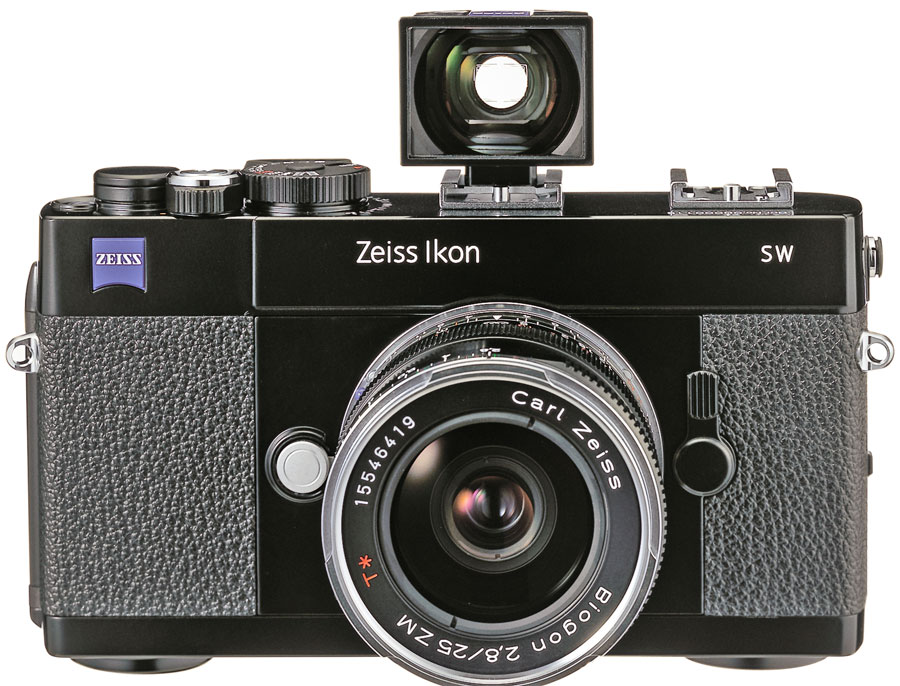Today’s Post by Joe Farace
 There are only few truly magical names in photography but Carl Zeiss is certainly one of them. The name conjures up an image of optical perfection with cameras that are built to a standard not a price point. Back in the 1950s when I was dreaming of making photographs with a camera that was more precise, more German, than my Argus C3, Zeiss Ikon cameras were already known for their innovative design, excellent build quality and superb lenses.
There are only few truly magical names in photography but Carl Zeiss is certainly one of them. The name conjures up an image of optical perfection with cameras that are built to a standard not a price point. Back in the 1950s when I was dreaming of making photographs with a camera that was more precise, more German, than my Argus C3, Zeiss Ikon cameras were already known for their innovative design, excellent build quality and superb lenses.
My (now discontinued) Zeiss Ikon SW 35mm film camera offers the same build high quality as the company’s rangefinder models but lacks the rangefinder. An accessory shoe atop the camera directly above the lens accepts a separate viewfinder designed to match the focal length of an attached lens. As an aid in composing your shot, these viewfinders also show the approximate area of the final image. The lens I typically use with is the Zeiss 21mm f/2.8 Biogon lens along with the optional ($386) Z1 viewfinder that doesn’t come with the lens because Zeiss doesn’t know what kind of M-mount camera you’ll use it on. I’ve used the 21mm with my Leica M6 TTL and with an adapter with one of my Lumix mirrorless cameras. This lens itself is a work of the optical art.
 Film aficionados might think of the SW as a 35mm version of Hasselblad’s Super Wide and it is similar in operation. The big difference is the SW has an electronically controlled metal shutter offering speeds from 1/2000 to eight seconds in Aperture Priority mode and 1/2000 to one second plus Bulb in manual mode. The fastest flash synchro speed is 1/125 sec but I don’t think many people used it with flash—but you never know.
Film aficionados might think of the SW as a 35mm version of Hasselblad’s Super Wide and it is similar in operation. The big difference is the SW has an electronically controlled metal shutter offering speeds from 1/2000 to eight seconds in Aperture Priority mode and 1/2000 to one second plus Bulb in manual mode. The fastest flash synchro speed is 1/125 sec but I don’t think many people used it with flash—but you never know.
The camera’s main structure is a single aluminum die cast part with the M-mount lens bayonet and focal plane shutter attached to it. The lower part of the shutter is painted light grey to optimize light metering.
The camera has LEDs on it’s back indicating shutter speed and over/under exposure warning. Three LEDs specify over exposure (blinking green LED), underexposure (blinking red LED) and shutter speed (various combinations of illuminated, red, green and orange LEDs.) It’s a system that’s easy enough to understand once you remember that as the colors get warmer as shutter speeds increase.
My Zeiss Ikon SW is the last film camera in my collection of cameras that I kept after “going digital” that I haven’t tested—so far. Of all the film cameras that I’ve kept only the Leica M6 TTL lived up to its expectations; the Hasselblad XPan less so and it was sold. The Leica Z2X was also a fizzle as was the Seagull TLR, but I’m going to give that one last try before totally giving up on medium format. In the nerar future, I’ll be shooting the SW with one of the films from Joe’s Film Box for June and will do a combination review of film and camera.
Is the Zeiss Ikon SW camera old fashioned? Yes. But If you haven’t already figured it it from previous Film Friday posts, I believe that traditional film photography is far from dead; it’s alive and well because cameras like the Zeiss Ikon SW give us ways to create images that suit how we like to work.
Just a reminder: Podcast #3 is live now on my YouTube channel, Joe Farace’s Videos, featuring a look at the Leica Z2X and my experiences shooting 22-year old Agfa color film in a 40-year old Canon SLR, plus some information on where I get my ideas for blog posts!